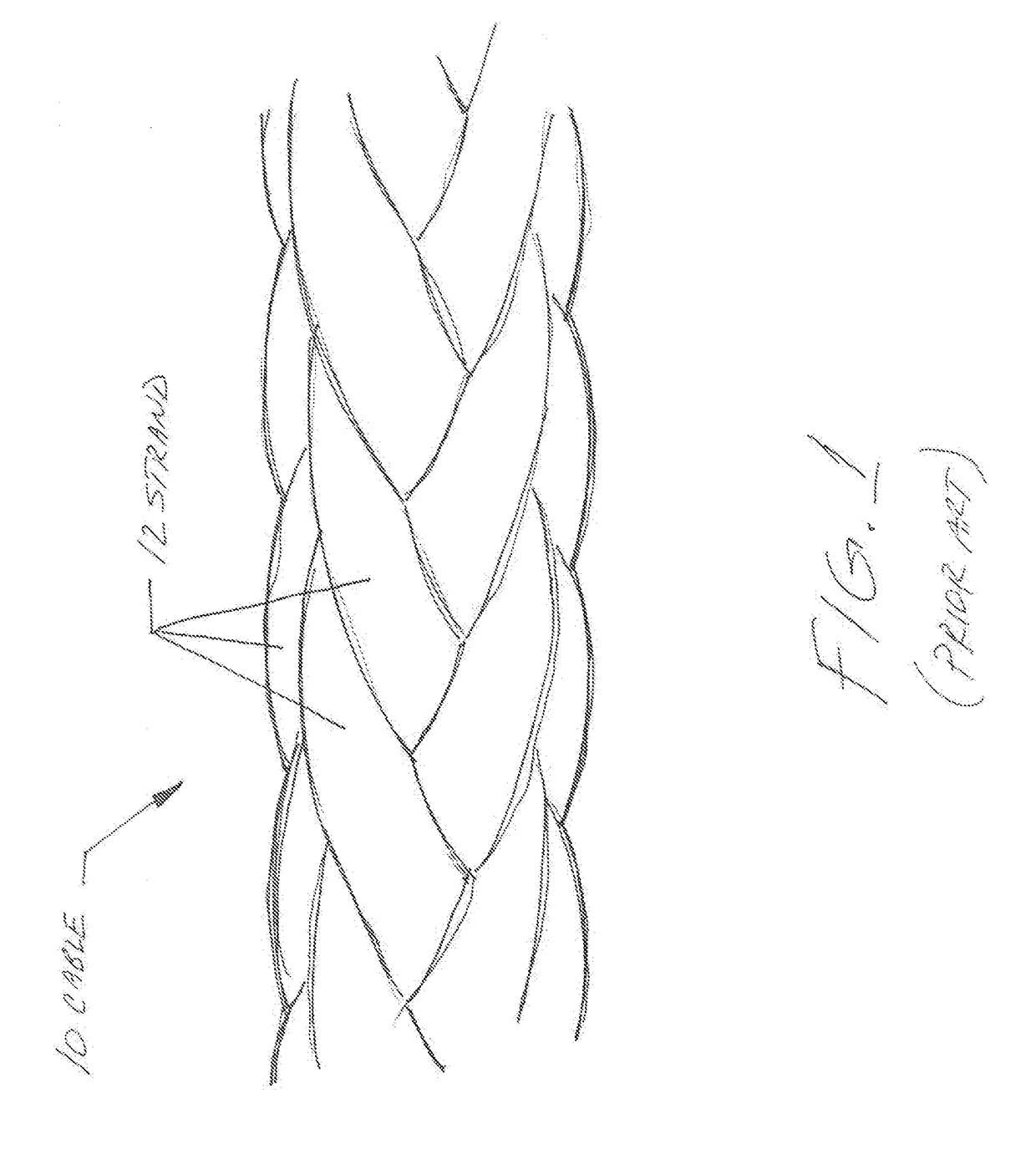Method and Apparatus for Producing a Synthetic Semi-Static Tensile Member
a technology of semi-static tensile members and methods, which is applied in mechanical apparatus, rod connections, cables for vehicles/pulleys, etc., can solve the problems of affecting the quality of synthetic filaments, difficult to organize, and the tensile load of moving buckets on the four cables is enormous
- Summary
- Abstract
- Description
- Claims
- Application Information
AI Technical Summary
Benefits of technology
Problems solved by technology
Method used
Image
Examples
Embodiment Construction
[0067]A cable is a good example of a semi-static tension member. An exemplary cable made according to the present invention will generally have a first termination on its first end and a second termination on its second end. It is important to precondition such a cable after it is made in order to establish a known and stable overall length.
[0068]FIG. 5 shows a synthetic cable assembly created by adding a termination 36 to each end of cable 10. The term “synthetic” in this context should be understood to encompass cables made of 100% synthetic filaments as well as hybrid cables made up of a mix of synthetic filaments and conventional metallic filaments.
[0069]The first termination is connected to static fixture 40 by a pin located at first attachment reference 45. The second termination is attached to loading fixture 38 by a pin located at second attachment reference 47. A predetermined tension profile is then applied through loading fixture 38.
[0070]This tension profile may assume m...
PUM
| Property | Measurement | Unit |
|---|---|---|
| Length | aaaaa | aaaaa |
| Tensile properties | aaaaa | aaaaa |
| Flexibility | aaaaa | aaaaa |
Abstract
Description
Claims
Application Information
 Login to View More
Login to View More - R&D
- Intellectual Property
- Life Sciences
- Materials
- Tech Scout
- Unparalleled Data Quality
- Higher Quality Content
- 60% Fewer Hallucinations
Browse by: Latest US Patents, China's latest patents, Technical Efficacy Thesaurus, Application Domain, Technology Topic, Popular Technical Reports.
© 2025 PatSnap. All rights reserved.Legal|Privacy policy|Modern Slavery Act Transparency Statement|Sitemap|About US| Contact US: help@patsnap.com



